1.3 - A practice of analysis in the tonal harmonic discourse from Bach to Wagner ||
A) FORMULAS - 1. Definition of
a formula ::
2. Presentation of
the little catalogue of harmonic vocabulary ::
3. User's guide to
the little catalogue and various instructions ::
4. Examples
illustrating the little catalogue (motifs: 1, 2, 3, 4, 5, 6a, 6b, 7, 8, 9, 10, 11, 12, 13, 14, 15, 16, 17, 18, 19, 20, motifs in combination)
B) SEQUENCES - 1. Definition of a
harmonic sequence :: 2. Classifying
sequences :: 3. Melodic
formulations: characteristic motifs :: 4. The tonal
nature of the harmonic sequence :: 5.The tripartite
structure of the harmonic sequence :: 6. A
modulating sequence or not? :: 7. Diversification
of harmonic content :: 8. The harmonic
sequence as a place of subversion :: 9. Conclusion
4. EXAMPLES ILLUSTRATING THE LITTLE CATALOGUE
Motif no 16
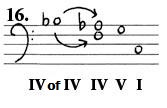
|
Example 274 : R. Schumann : Carnaval, op. 9, no 12, Chopin (mm 1-4)
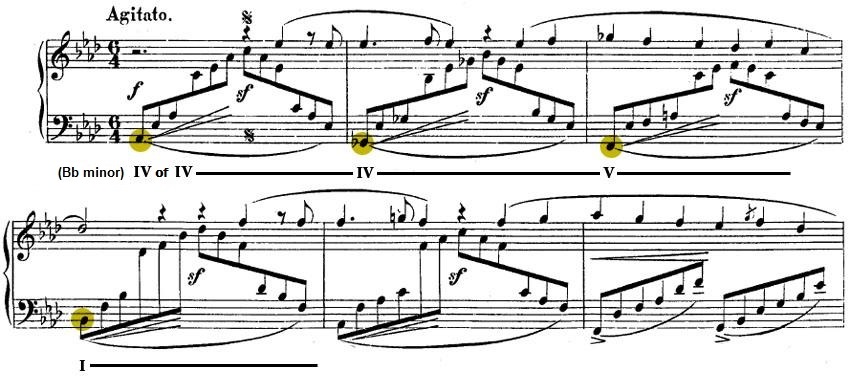
Example 275 : L.V. Beethoven : Piano sonata, op. 53, III, Rondo (mm 239-247)
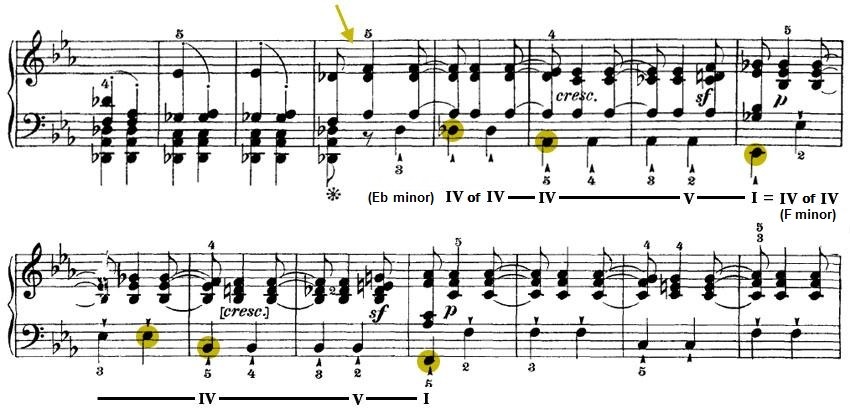
Example 276 : W.A. Mozart : Symphony no 41, "Jupiter", K. 551, IV (mm 229-241)

Example 277 : F. Chopin : Mazurka, op. 56, no 3 (mm 88-95)
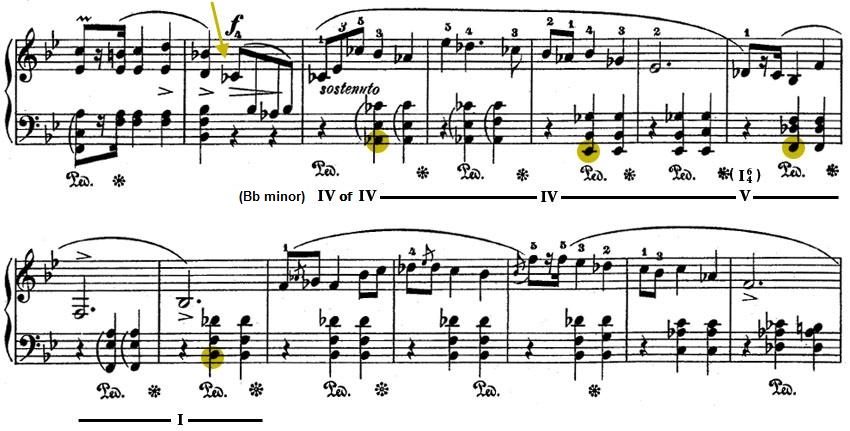
Example 278 : C. Saint-Saëns : Introduction and Rondo Capriccioso, op. 28 (mm 11-18)
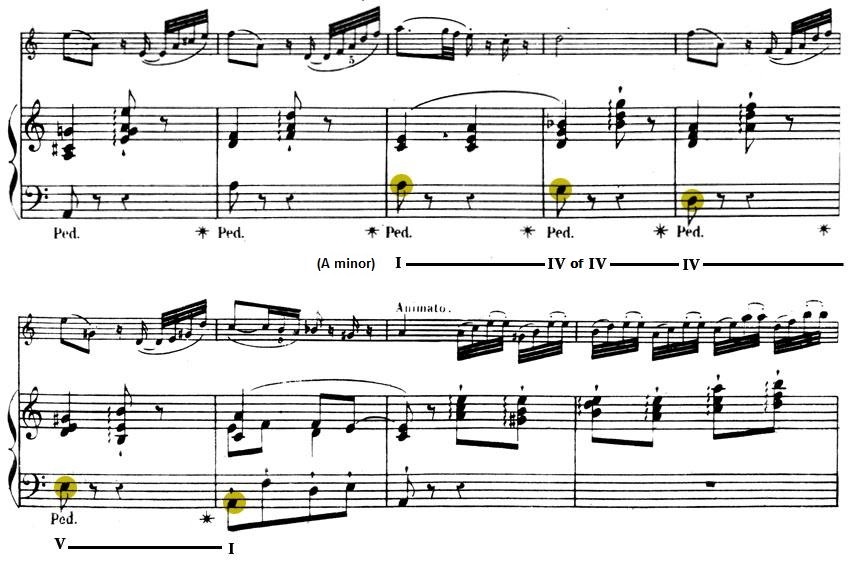
Example 279 : J.S. Bach : The Well-Tempered Clavier, vol. II, Prelude no 18, BWV 887 (mm 32-34)
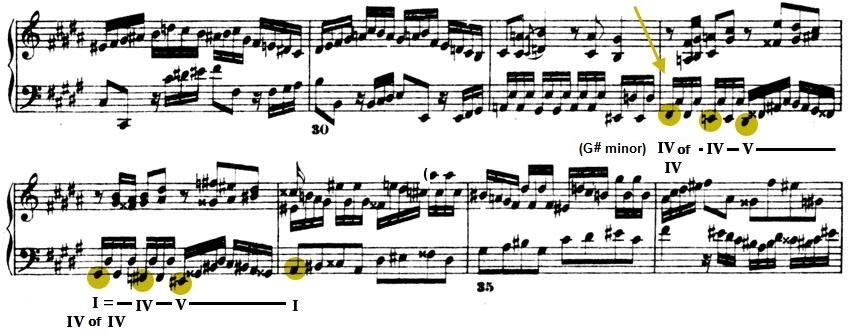
Example 280 : F. Schubert : Sonata, op. 122, III (mm 38-44)
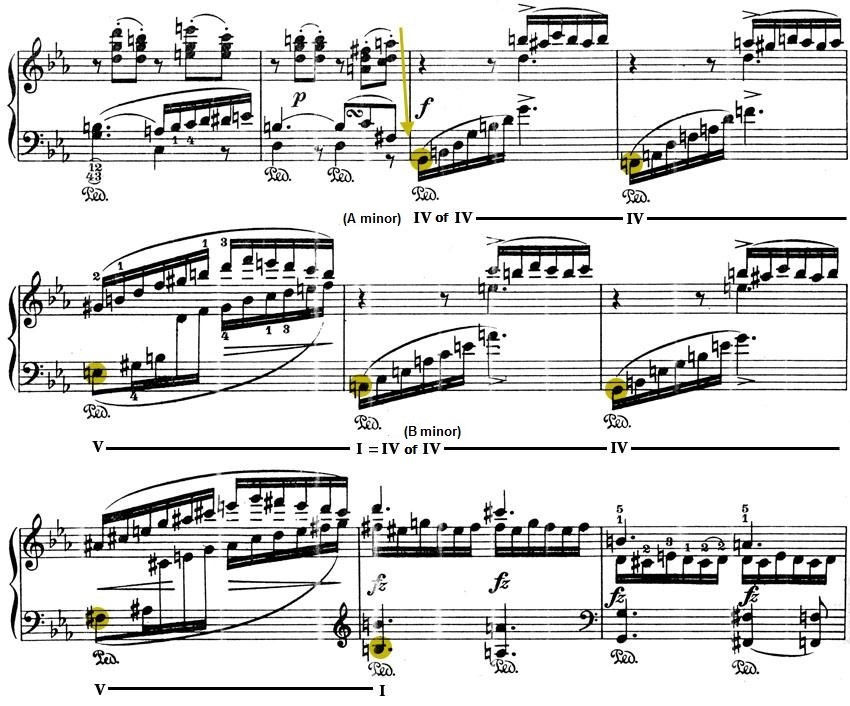
Example 281 : W.A. Mozart : Piano sonata, K. 279 (189d), II (mm 29-32)
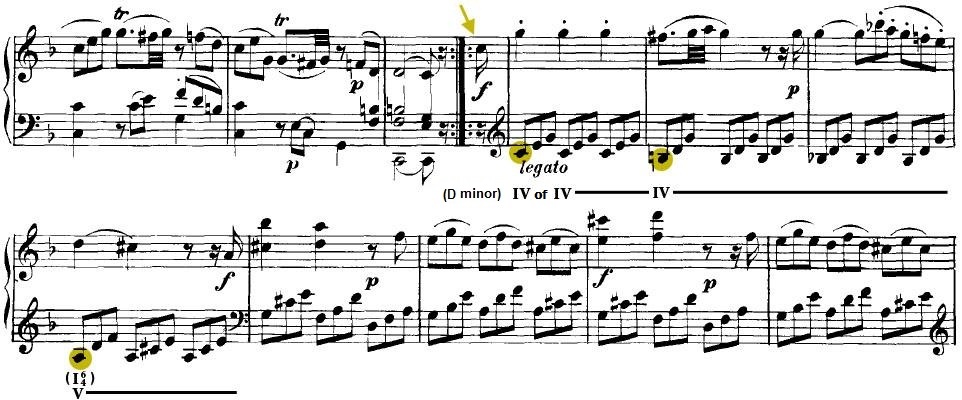
Example 282 : F. Chopin : Etude, op. 25, no 2 (mm 37-39)
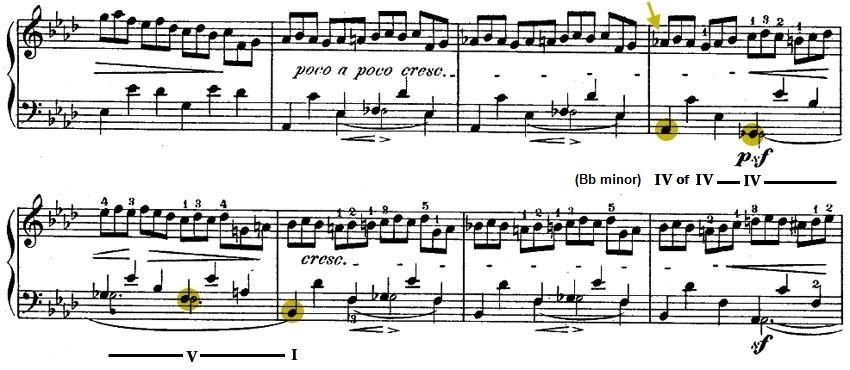
Example 283 : J. Brahms : Symphony no 1, op. 68, IV, Allegro non troppo, ma con brio (mm 25-28)

Example 284 : G. Rossini : Petite messe solennelle, no 14, Agnus Dei
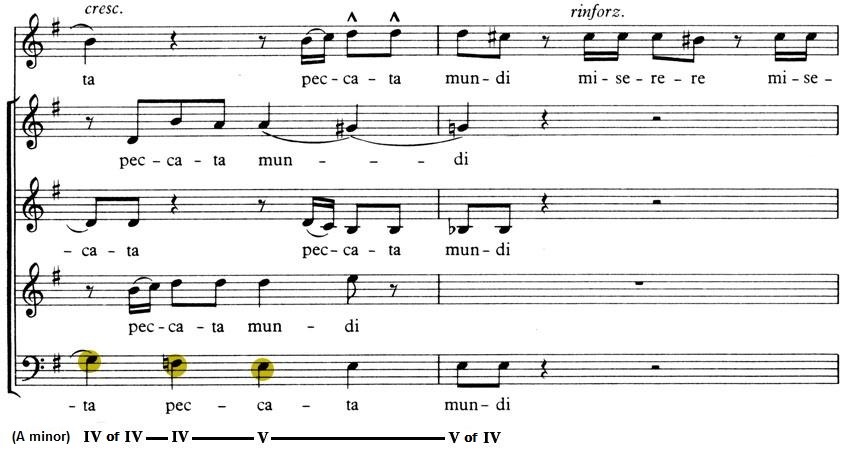
Example 285 : L.V. Beethoven : Piano sonata, op. 31, no 1, I (mm 134-150)

It should be mentioned here that motif no 16 can also support (albeit much
more rarely) the formula IV of N - N - V - I as we observed in example 81.
motif no 17 
|
